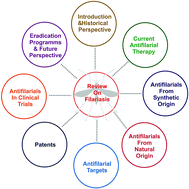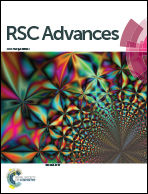Two decades of antifilarial drug discovery: a review
Abstract
Filariasis is one of the oldest, most debilitating, disabling, and disfiguring neglected tropical diseases with various clinical manifestations and a low rate of mortality, but has a high morbidity rate, which results in social stigma. According to the WHO estimation, about 120 million people from 81 countries are infected at present and an estimated 1.34 billion people live in areas endemic to filariasis and are at risk of infection. In this review, we focus on Lymphatic Filariasis (LF) and provide brief insights on some other filarial conditions. Current drug treatments have beneficial effects in the elimination of only the larval stage of the worms. Very few drugs are available for treatment of filariasis but their repetitive use may give rise to drug resistance. They are also found to be fairly ineffective towards eliminating adult worms. Moreover, no effective vaccine is available for treatment of filariasis. Because of these limitations, development of new antifilarials has been of utmost importance, a fact which encourages researchers to discover new drugs having antifilarial activity. Herein we extensively review developments in the field of antifilarials including the types of filariasis, their historical perspectives, eradication programs, different classes of drug (i.e. synthetic as well as natural), explored product-derived different targets, patents and clinical trials.

- This article is part of the themed collection: 2017 Review articles


 Please wait while we load your content...
Please wait while we load your content...